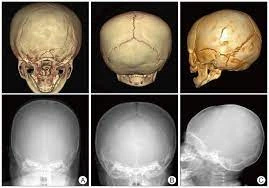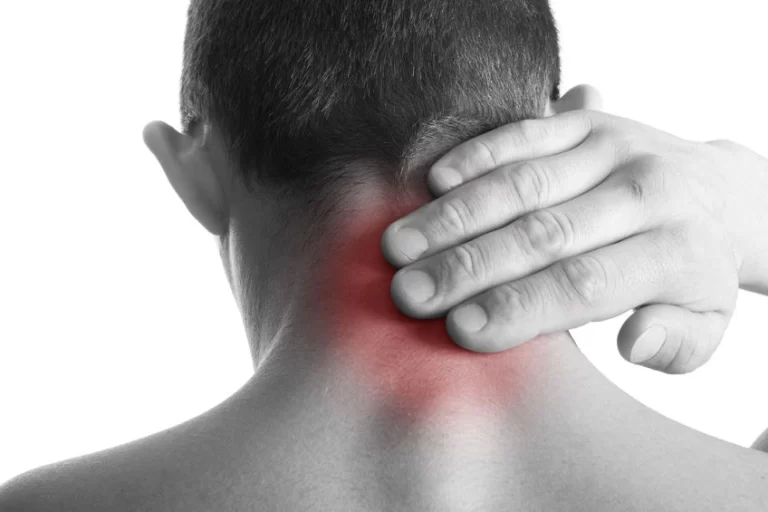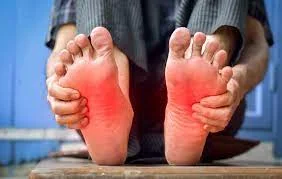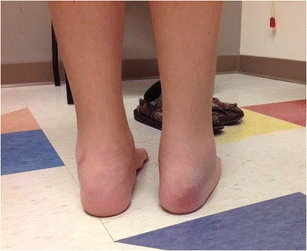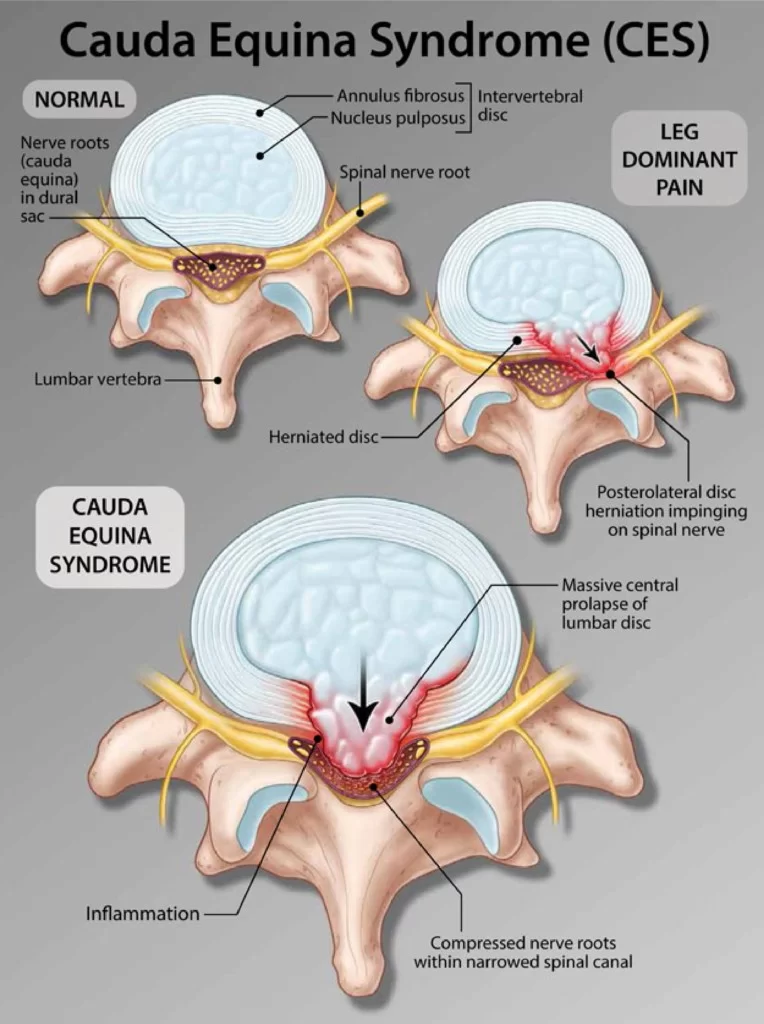Skull Fractures
Introduction
Any break in the cranial bone (skull) is called a skull fracture. The majority recover on their own, however, recovery can take weeks or months if brain injury or surgery is required.
There is just one main cause of skull fractures, despite the wide variety of forms that they might take: a blow or impact to the head powerful enough to shatter a bone. Although it’s not usually the case, a brain injury may potentially occur along with the fracture.
It’s not always simple to spot a fracture. Nonetheless, the following signs may point to a fracture.
Anatomy of Skull
- Anatomically, the human skull is divided into two sections: the neurocranium, which is made up of eight cranial bones and houses and protects the brain, and the viscerocranium, or facial skeleton, which is made up of fourteen bones (not counting the three inner ear ossicles). When we talk about fractures to the skull, we usually imply fractures to the neurocranium. On the other hand, we refer to fractures to the face region of the skull as facial fractures, or mandibular fractures if the jaw is broken.
- The frontal bone, two parietal bones, two temporal bones, one occipital bone, one sphenoid bone, and one ethmoid bone are the eight cranial bones that are divided by sutures.
- The lamina externa, a hard, compact layer of the external table, and the diploë, a spongy layer of red bone marrow, are the three layers that make up the skull.
- at the center, as well as the inner table’s compact layer (Lamina interna).
- The thickness of the skull varies according to region. As a result, the impact site determines the amount of trauma needed to create a fracture. The external angular process of the frontal bone, the mastoid processes, the glabella, and the external occipital protuberance are all thick spots on the skull. Muscle-covered areas of the skull lack the underlying diploë development between the internal and external lamina, making the thin bone more prone to fractures.
- The sphenoid sinus, the foramen magnum (the aperture at the base of the skull through which the spinal cord travels), the petrous temporal ridge, the thin squamous temporal and parietal bones, and the sphenoid sinus are the places where skull fractures happen more frequently.
- the interiors of the sphenoid wings located near the skull’s base. The thinnest and weakest section of the skull is formed by the middle cranial fossa, a depression at the base of the cranial cavity. Multiple foramina further weaken this part of the cranial floor, increasing the likelihood of basilar skull fractures in this region. The cribriform plate, the roof of orbits in the anterior cranial fossa, and the spaces in the posterior cranial fossa between the mastoid and dural sinuses are other regions that are more prone to fractures.
Types of skull fractures
The force of the hit, where the impact occurs on the skull, and the shape of the object colliding with the head all affect the type of fracture that results from it.
Compared to a hard, blunt surface like the earth, a pointier object has a higher chance of penetrating the skull. Variations in fracture types result in varying degrees of trauma and injury. View an anatomy of the skull.
- Closed fracture:
The skin covering the fracture site is not sliced or fractured in a closed fracture, also known as a simple fracture. - Open fracture:
An open fracture, sometimes referred to as a complex fracture, happens when the skin breaks and the bone shows through. - a depressed fracture:
This is a fracture that results in an extension of the skull into the brain cavity. - base fracture:
The floor of the skull, which includes the regions around the nose, ears, eyes, and top of the neck close to the spine, is where a basal fracture happens. - Other kinds:
- Beyond the categories mentioned above, fractures can also be categorized as:
linear; following a straight path divided into three or more portions, or comminuted.
Causes of skull fractures
- When the skull is struck by a force powerful enough to shatter the bone, a fracture ensues. A fracture of the skull may result from any kind of head trauma. This comprises:
- being struck by something, such as a rock, hammer, or baseball bat
- tumbling to the earth
- suffering a brain injury in a motorbike collision
- being a pedestrian or cyclist and getting hit by a car or train
- being mistreated or physically assaulted
Symptoms of skull fractures
It could be simple to observe that the skull is fractured in some situations, such as an open or depressed fracture. However, the fracture may not always be visible. If you have any indications of a head injury, get immediate help.
The following are signs of a serious skull fracture:
- bleeding from the trauma-related wound, close to the trauma site, or around the nose, ears, and eyes
- bruises surrounding the trauma site, behind the ears as in a Battle’s sign, or beneath the eyes in a condition known as raccoon eyes
- extreme discomfort at the scene of the injury
- swelling where the trauma occurred
- warmth or redness where the trauma occurred
Less severe symptoms, or those that don’t seem to be connected to a fractured skull, could include: - headache
- nausea
- throwing up
- hazy vision
- agitation
- Anger
- imbalance loss
- tense neck
- Students not responding to light
- bewilderment
- extreme fatigue
Complications after the skull fracture
What kind of problems can arise from a fractured skull?
- The following are possible consequences of skull fractures: bleeding into brain tissue (intracranial hemorrhage).
- harm to the brain, including contusions, or bruised brain tissue.
- Venous sinus thrombosis, or blood clots.
- alterations to your look.
- Meningitis is an infection.
- immobility.
- seizures
- Complications from skull fractures can be fatal.
Risk factors
- When a bone experiences more force than it can withstand, a fracture results. A person may get a skull fracture via sports, falls, car crashes, or direct hits to the head or body.
- youngsters and adults can sustain skull fractures, although there are substantial distinctions between the bones of youngsters compared with those of adults.
- A child’s bone heals far more quickly than an adult’s. The youngster heals more quickly the younger they are.
- Children’s bones are softer than an adult’s, and they break less often, more like buckle or bend.
Diagnosing skull fractures
A simple physical examination of the skull by a medical professional may be sufficient to diagnose a fracture. Diagnosing the precise kind and amount of the damage is helpful, though. This calls for more specialized diagnostic equipment.
To gain a better understanding of the type of fracture you have and its extent, doctors can perform a variety of imaging procedures. MRIs, CT scans, and X-rays are common body imaging techniques that your doctor can use to identify skull fractures.
An image of the bone is obtained using an X-ray. A soft tissue and bone image is obtained by an MRI. This allows your doctor to see the brain and the cracked skull.
The most often utilized instrument is a CT or CAT scan. Typically, this test.
Treating Skull Fractures
Not like other bone fractures, skull fractures are treated differently. Several things will affect the course of treatment. Your age, condition, and medical background will all be taken into account by your doctor, along with the kind of fracture, how severe it is, and any ensuing brain damage.
After a fracture, the skull usually mends spontaneously, and some fractures don’t hurt too much. Sometimes all that is required is pain medicine, like in the case of basal skull fractures. Most persons with a skull fracture only require over-the-counter drugs like acetaminophen (Tylenol) for a brief period, while opioids may occasionally be required.
A linear fracture doesn’t require special care; it should mend on its own. Your care team will keep an eye out for any issues, such as seizures, while you are in the hospital. Should you experience seizures, a medical professional will administer antiseizure medicine for treatment.
Using painkillers for a brief period of time can make you feel better after an injury. Acetaminophen therapy may be sufficient in certain cases to reduce your symptoms. Find out from your doctor which over-the-counter pain treatment is right for you. Ice is also quite helpful if you have swelling.
Depending on the extent of your damage, your treatment options for basal, depressed, and diastatic fractures may include:
Head elevation during resting entails lying down with your head raised on pillows.
removing extra or seeping CSF fluid (a medical professional would pierce your lower back with a tiny needle).
undergoing surgery to realign the skull bones and, in the case of open fractures, sew your skin over the wound.
But if a basal fracture causes considerable cerebrospinal fluid leakage—the fluid that surrounds and cushions the brain—surgery might be necessary.
Preventing skull fractures
After a fracture, the skull usually mends spontaneously, and some fractures don’t hurt too much fractures are frequently avoidable. A skull fracture can be avoided by wearing protective headgear while riding a bicycle or engaging in other sports like football and rock climbing that put the head at risk for injury.
What is the severity of a skull fracture?
The kind of fracture determines how significant the fracture is in the skull. It also depends on whether and how badly the brain was harmed. Treatment for minor fractures may consist of medicines and home or hospital supervision. Surgery might be required for injuries that are more serious.
How much time does it take to heal from a skull fracture?
The majority of skull fractures heal over time on their own. It could take weeks or months for the brain to heal completely if surgery was necessary to address the skull fracture or underlying brain injury.
What is the severity of a skull fracture?
The kind of fracture determines how significant the fracture is in the skull. It also depends on whether and how badly the brain was harmed. Treatment for minor fractures may consist of medicines and home or hospital supervision. Surgery might be required for injuries that are more serious.
How much time does it take to heal from a skull fracture?
The majority of skull fractures heal over time on their own. It could take weeks or months for the brain to heal completely if surgery was necessary to address the skull fracture or underlying brain injury.
You’ll probably want assistance to regain full brain function if you’ve suffered significant brain damage.
Can you survive a skull fracture?
Most people who have a fractured skull survive. According to the Centers for Disease Control and Prevention, in 2017, 27 percent, Trusted Source of people with severe brain injury did not survive.
Can issues arise in later life from a cracked skull?
You might have temporary or permanent physical and mental problems after a serious brain injury, which might necessitate medical attention or rehabilitation. One kind of alteration is the loss of motor skills including taste, hearing, vision, or speaking. Additionally, you can notice behavioral or personality changes.
Takeaway
- An impact or blow to the head that is powerful enough to break the bone results in a fractured skull. Skull fractures come in a variety of forms, and the prognosis for healing is contingent upon the nature and extent of the injury.
- Seek immediate medical assistance if you have life-threatening symptoms such as bleeding, excruciating pain, swelling, redness, or bruises near the trauma site. A physical examination by a physician or the use of imaging technologies such as CT, MRI, and X-rays can be used to diagnose a fracture.
- A skull fracture’s course of treatment will depend on several variables. This could involve your age, health, and medical background, as well as the kind of fracture if there is a brain injury underneath.
- Wearing a seat belt in a car and donning a helmet when playing sports or bicycling are two ways to prevent a broken skull.
FAQ
Can you recover from a skull fracture?
The kind and degree of a skull fracture determine how long it will take to heal. It can take three to six months for a skull fracture to fully heal. In younger children, they typically recover more quickly. Make sure your child stays away from physical sports until the doctor gives the all-clear to resume.
How serious is a fractured skull?
Skull fractures may occasionally mend on their own without medical intervention. More serious skull fractures, on the other hand, can necessitate surgery and result in additional problems, such as brain damage.
What not to do after a skull fracture?
Avoid clear of exerting yourself by not sneezing, blowing your nose, or lifting large objects. The pressure inside your brain could rise if you strain. If there is a leak of fluid surrounding your brain, straining could make it worse.
What are the signs and Symptoms of a skull fracture?
signs and symptoms are:
a lump or dent on the head.
bruising or swelling on the head.
headache.
confusion or disorientation.
dizziness.
nausea or vomiting.
loss of consciousness.
blood or a transparent liquid leaking from the ears or nose.
What is the first aid treatment for a skull fracture?
Clothe the wound with sterile gauze or a clean cloth and apply firm pressure. But if you think there may be a fracture to the skull, don’t put direct pressure on the wound. Start CPR if the patient is not breathing, coughing, or moving. These are indicators of no circulation.
References
- Ellis, M. E. (2023, April 20). Skull Fractures. Healthline. https://www.healthline.com/health/skull-fracture
- Professional, C. C. M. (n.d.). Skull Fracture. Cleveland Clinic. https://my.clevelandclinic.org/health/diseases/skull-fracture
- Skull Fractures. (2021, July 21). Columbia Neurosurgery in New York City. https://www.neurosurgery.columbia.edu/patient-care/conditions/skull-fractures
- Skull fracture. (2023, December 1). Wikipedia. https://en.wikipedia.org/wiki/Skull_fracture

